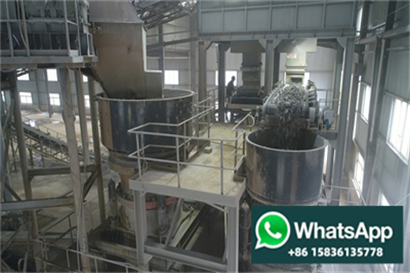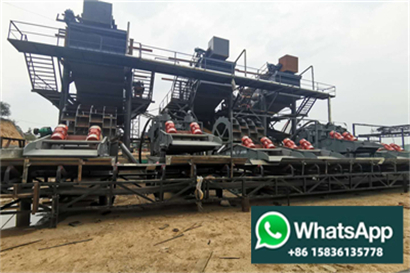
— Ash and slag waste ASW from coal fired thermal power plants TPPs the amounts of which make several tens or even hundreds of millions of tons per annum require allocation of large land areas for storing them This waste is a source of pollution emitted into the atmosphere and it poisons the aqueous medium and soil Ash and slag waste
— The mentioned properties of industrial slag brings about the question of whether this waste material can be utilized in value added applications as well in addition to its use in low value added applications such as filling material in construction industry or for waste heat recovery in steel production plants for cost saving
WhatsApp
— A sulphur balance is made for the steelmaking process of Tata Steel IJmuiden the Netherlands There are four stages where sulphur can be removed in the blast furnace BF during hot metal HM pretreatment in the converter and during the secondary metallurgy SM treatment For sulphur removal a low oxygen activity and a
— Metallurgical slags are produced at a massive rate of over 750 Mt/year and carry a thermal energy equivalent to 40 Mt/year of coal The potential mineral and thermal energy values of slags are in the order of $22 b and $3 6 b per year Such attractive figures together with tightening legislation on disposal of slag and the carbon footprint associated
WhatsApp
— The side effect of fossil fuel combustion in power plants is the high amounts of combustion waste known as coal combustion by products CCB In many countries searches are underway for various effective ways of the recovery of coal combustion by products CCP such as fly ash bottom ash boiler slag gypsum from desulfurization
WhatsApp
— When water is introduced into the slag removal equipment the molten slag will crack into small granules first due to the thermal stress and then be taken out and transported for further processing Meanwhile abundant hot water and steam will be produced The subcooled water quenching system is shown in Fig 1 Working mediums
WhatsApp
— In Ukraine ash slag is officially called waste Power plants offer consumers exactly the waste but not technically finalized product with the working characteristics corresponding to building regulations In Western Europe and Japan ash heaps are known to be practically eliminated at the thermal power plants Dry ash
WhatsApp
— fly ash boiler slag and flue gas desulfurization gypsum in the world Furthermore the increasing accumulation of boiler slag and fly ash has caused serious problems for ecosystems Therefore utilization of CCPsis of great environmental and economic importance Fly ash from PCC power plants in Xinjiang NW China has been
WhatsApp
— The mass of sulphur that can be removed with a certain slag is defined as the sulphur removal capacity of the slag This sulphur removal capacity is different from the thermodynamically defined sulphide capacity C S which was introduced by Fincham and Richardson [Citation 4] In the present work the sulphur removal capacity of
— The mentioned properties of industrial slag brings about the question of whether this waste material can be utilized in value added applications as well in addition to its use in low value added applications such as filling material in construction industry or for waste heat recovery in steel production plants for cost saving
WhatsApp
— An important method that coal fired power plants use to realise low cost zero discharge of desulfurisation wastewater FGD wastewater is to utilise wet slag removal systems However the high Cl− content of FGD wastewater in wet slag removal systems causes environmental damage
WhatsApp
AMS Asset Management System = Sebuah Konsep inti dalam mengelola seluruh yang terkait dengan Pembangkit Listrik AMS ini dapat di gunakan untuk berbagai macam industri Action Plan = Urutan langkah yang harus diambil atau kegiatan yang harus dilakukan dengan baik untuk strategi dalam mencapai keberhasilan Asset Turnover = Jualan yang
WhatsApp
The largest bottom ash particle sizes typically rang from 19 mm 3/4 in to mm 1½ in Bottom ash is usually a well graded material although variations in particle size distribution may be encountered in ash from the same power plant Figure 4 compares the grain size distribution curves of bottom ash samples from several sources Figure 4
WhatsApp
— Ash and slag waste ASW from coal fired thermal power plants TPPs the amounts of which make several tens or even hundreds of millions of tons per annum require allocation of large land areas for storing them This waste is a source of pollution emitted into the atmosphere and it poisons the aqueous medium and soil Ash and slag waste
WhatsApp
Quickly and easily remove tough laser slag and dross buildup from your laser slats table Best cleaning result due to professional design and creative manufacturing process Rated power 2300 W 2000 W Idle speed 1400 r/min 1600 r/min Slat thickness 2 6 mm in Max slag thickness SLAG REMOVAL TOOL SPECIALIST
WhatsApp
— An effective strategy for achieving cost effective and environmentally friendly desulfurization wastewater in coal fired power plants involves the incorporation of desulfurization wastewater into the slag water system The objective of this study was to analyze the corrosion behavior of Q235 A slag picker shell material upon the introduction
WhatsApp
— Coal ash is a general term—it refers to whatever waste is leftover after coal is combusted usually in a coal fired power plant It contains arsenic mercury lead and many other heavy metals
WhatsApp
— The copper slag produced by the slag cleaning furnaces as a final by product yields copper in the range of wt % in the discarded slag with copper losses of most plants in the discarded slag limited between wt % and wt % Coursol et al 2012 However the final copper slag still contains large amounts of valuable
WhatsApp
— Fine slag FS is an unavoidable by product of coal gasification FS which is a simple heap of solid waste left in the open air easily causes environmental pollution and has a low resource utilization rate thereby restricting the development of energy saving coal gasification technologies The multiscale analysis of FS performed in this study indicates
WhatsApp
— power plants covering a number of ash related issues addressed some of the more recent developments in the field of slagging and fouling but a number of significant changes have continued to reshape the power generation sector which warrant this updated study of the topic This report sets out to
WhatsApp
— At the same time fly ash and slag are produced as the solid residues of this process with about 60 70% slag and 30 40% fly ash In the present special issue Wang et al [209] investigate the
WhatsApp